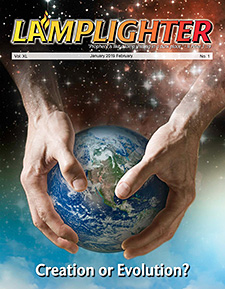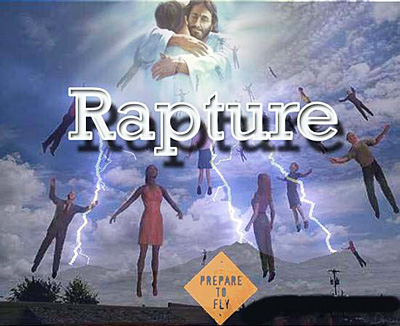The Rapture Under Attack
Prophecy Study

Noah preached for 120 years before the Lord delivered on His promise to destroy the world with water. I’m sure that in the final years before the flood came, he must have been severely mocked as a false prophet and a mad man. But God was faithful to His promise, and Noah was vindicated in the end.
Likewise today, people are scoffing at the promise of the Pre-Tribulation Rapture, and they are mocking those who are preaching it. I keep hearing comments like this: “People have been preaching the Lord’s imminent return for a hundred years, and nothing has happened.”
The irony is that this attitude is one of the signs that we are living in the final days of the end times, for the Bible says “that in the last days mockers will come with their mocking, following after their own lusts and saying, ‘Where is the promise of His coming?'” (2 Peter 3:3-4).
The Common and Frequent Criticisms
Let’s consider for a moment some of the criticisms that are being aimed at the concept of a Pre-Tribulation Rapture.
1. The concept is not in the Bible. The word, Rapture, is not mentioned anywhere in the Scriptures.
First, there are many biblical concepts and words that are not found in the Bible — like Trinity, Atheism, Divinity, Incarnation, Monotheism, Shekinah Glory, and even the word, Bible.
But the word, Rapture, is found in the Bible — in the Latin version, which was the Bible of the Western world for over 1,000 years (from 400AD to 1517). The word appears in 1 Thessalonians 4:17 where, in English, it says that a day will come when the living and dead in Christ will be “caught up” to meet Him in the sky. In the Latin, the term, “caught up,” is expressed as “rapiemur,” which is a declension of “rapio,” meaning snatch, or grab or abduct.
More importantly, the concept of the Rapture is clearly taught in the same passage (1 Thessalonians 4:13-18) as well as other passages, such as John 14:1-6 and 1 Corinthians 15:51-58.
2. None of the Church Fathers believed in a Rapture that was separate and apart from the Second Coming.
It depends on your definition of “Church Fathers.” All the true Fathers of the Church definitely believed in a Rapture that was distinct from the Second Coming. I’m speaking, of course, of Jesus who taught the Rapture in John 14:1-6; the Apostle Paul who wrote about it in 1 Thessalonians 4 and 1 Corinthians 15; the Apostle Peter who described the principle of it in 2 Peter 2:4- 9; and the Apostle John who does not mention the Church being on earth during the Tribulation (Revelation 6-18).
The later Church Fathers, who lived between 100 and 400 AD, were nearly all Premillennial in their Eschatology, but none of them seemed to pick up on the teaching of the Rapture. And when the Catholic Church endorsed Augustine’s concept of Amillennialism around 400 AD, all discussion of end time prophecy became taboo. That viewpoint pictured only one return of Jesus at the end of the Church Age.
Thereafter, You either accepted Amillennialism or you were burned at the stake, together with your writings.

Unspeakable joy for those who know the Lord.
3. The concept of the Pre-Tribulation Rapture is too new to be true.
This is exactly what the defenders of Roman Catholicism said to Luther about his biblical concept of “salvation by grace through faith.”
It is true that the concept of a Pre-Tribulation Rapture was not crystalized in its final form until the writings of Englishman John Darby in the early 1800s, but we now have overwhelming proof that the concept was being discussed by Bible prophecy students for over 200 years prior to the time of Darby. (See William C. Watson’s book, Dispensationalism Before Darby, published in 2015.)
But then, how could there be any development of eschatology prior to the Reformation which began in 1517? During the Middle Ages, most people could not read, and even if they could, printed Bibles did not exist, nor were there translations available in the common languages of the people.
Once people obtained printed Bibles in their own languages, they quickly realized that the Amillennial view of the Catholic Church was based upon a spiritualization of the Scriptures. That’s when a revival of the Premillennial view occurred because it is based upon the plain sense meaning of the Bible’s prophecies. And that is also when Bible students began to notice that the Rapture is an event that is separate from the Second Coming.
Nor should the late development of the Pre-Trib Rapture concept be a surprise to anyone because the Scriptures themselves tell us that end time Bible prophecy will not be understood until the time comes for its fulfillment. For example, the prophet Daniel did not understand the end time prophecies that were given to him. And when he complained about this to the Lord, he was told, “these words are concealed and sealed up until the end times” (Daniel 12:9).
Many end time prophecies are being understood today for the first time because their fulfillment depended on either historical developments (like the re-establishment of the state of Israel) or technological inventions (like the atomic bomb and satellite television).

Unspeakable horror for those who are left behind.
4. The concept of the Pre-Tribulation Rapture originated with a demon-possessed teenage girl in Scotland in the early 1800s who conjured up the idea in a vision.
This is pure myth. The idea comes from the writings of a man named Dave MacPherson who has made a cottage-industry of writing books in which he makes this ridiculous claim.
It is true that there was a teenage girl named Margaret MacDonald who had seizures and visions about the Lord’s return. And it is true that years later, after the concept of a PreTrib Rapture had gained acceptance, her husband claimed that she had originated the idea in one of her visions. But this claim can be disproved quickly and decisively by the fact that there is not even a hint of a Pre-Trib Rapture in any of her recorded visions.
And furthermore, as I have already pointed out, William Watson has proved that the idea of a Pre-Trib Rapture had been circulating among Bible prophecy scholars and writers for 200 years prior to Margaret MacDonald. Also, even if it were true that she mentioned such a concept in one of her visions, it would prove nothing. The test of any biblical doctrine is not who originated it but whether or not it is biblical. And the concept of a Pre-Trib Rapture certainly stands the test of the Scriptures.
5. The Rapture and the Second Coming are a combined event that will take place at the end of the Tribulation when Jesus returns to earth.
How could this be? These two events have nothing in common except that they both focus on Jesus. Consider the radical differences:
- At the Rapture, Jesus appears in the heavens, but at the Second Coming he returns to earth.
- At the Rapture, Jesus appears for His saints; at the Second Coming. Jesus returns to earth with His saints.
- At the Rapture, Jesus appears as a Deliverer; at the Second Coming He returns as a Warrior.
- At the Rapture, Jesus appears in Grace; at the Second Coming, He returns in Wrath.
- At the Rapture, Jesus appears as a Bridegroom; at the Second Coming, He return as a King.
These obviously are not the same event. We must conclude, therefore, that the return of Jesus is going to be in two stages: first, the Rapture, and then the Second Coming.
6. If the Rapture is an event separate from the Second Coming, then it will most likely occur sometime during the Tribulation, either in the middle or near the end.
But the Bible teaches that the Rapture is imminent (Matthew 24:36,44 and 25:13), meaning it could occur at any moment. If you place the Rapture anywhere inside the Tribulation, then you render it non-imminent, for there are prophecies that must be fulfilled before it occurs. Furthermore, we are told to live looking for Jesus Christ, not the Antichrist.
Also, keep in mind that believers are promised exemption from the wrath of God. One of those promises is found in 1 Thessalonians 1:10 where it says that believers are waiting “for His Son from heaven, whom He raised from the dead, that is Jesus, who delivers us from the wrath to come.” The promise is repeated in the book of Revelation before it describes the horrors of the Tribulation. You will find that promise in Revelation 3:10 where it says, “Because you have kept the word of My perseverance, I also will keep you from the hour of testing, that hour which is about to come upon the whole world, to test those who dwell on the earth.”
The seven years of Tribulation which the world is facing is the period of time when God will pour out His wrath, and believers are promised immunity from His wrath. Some of the critics of the Pre-Trib Rapture argue that the Church needs to be cleansed by the suffering of the Tribulation before its members are called to the Lord. This is nonsense. The members of the Lord’s Church have already been cleansed by the blood of Jesus. Another problem with this concept is that it creates a Protestant form of Purgatory. An additional problem is that it pictures the Bridegroom beating up on his Bride for seven years before He marries her!
Other critics argue that the Seal and Trumpet Judgments constitute the wrath of Satan and not God. Therefore, the Church is immune only to the Bowl Judgments that will be poured out at the end of the Tribulation. This argument constitutes a serious challenge to the sovereignty of God — as if Satan is free to do as he pleases. Furthermore, the book of Revelation clearly pictures all the judgments of Revelation as coming from God’s throne, and the Bowl Judgments are referred to as the completion of God’s wrath, not the beginning (Revelation 15:1).
Conclusion
The Bible refers to the Rapture as our “blessed hope” (Titus 2:13). When Paul completes his detailed description of it in 1 Thessalonians 4:13-17, he concludes by saying, “Comfort one another with these words.” (Verse 18).
At the Lamb & Lion annual Bible conference in 2017, one of our guest speakers, Ron Rhodes, pointed to these comforting words when he demonstrated how ridiculous it is to believe that the Rapture and Second Coming are all one event that will occur at the end of the Tribulation. He pointed out that if this were true, then Paul’s great passage about the Rapture in 1 Thessalonians 4 would read something like this:
You will go through seven years of God’s wrath. You will also suffer through Satan’s furious wrath. You will experience the agonizing Seal, Trumpet and Bowl Judgments which grow progressively worse and are incredibly painful. And many of you will die horrible deaths as martyrs. Therefore, comfort one another with these words.
What? I don’t think so. Would that encourage and comfort you? It just doesn’t work.
The great American pastor, Adrian Rogers (1931-2005), once said, “The world is growing gloriously dark.” What he meant by that, of course, is that the Bible prophesies that in the end times society will become as immoral and violent as it was in the days of Noah.
We are witnessing the fulfillment of that prophecy before our very eyes today. It is difficult to watch, but at the same time, it is a sure sign that we are living in the season of the Lord’s return. As the world is falling apart, the signs of the times are falling into place. In the midst of the growing darkness, we need hope, and the Bible’s promise of a Pre-Trib Rapture is a great source of that hope.




